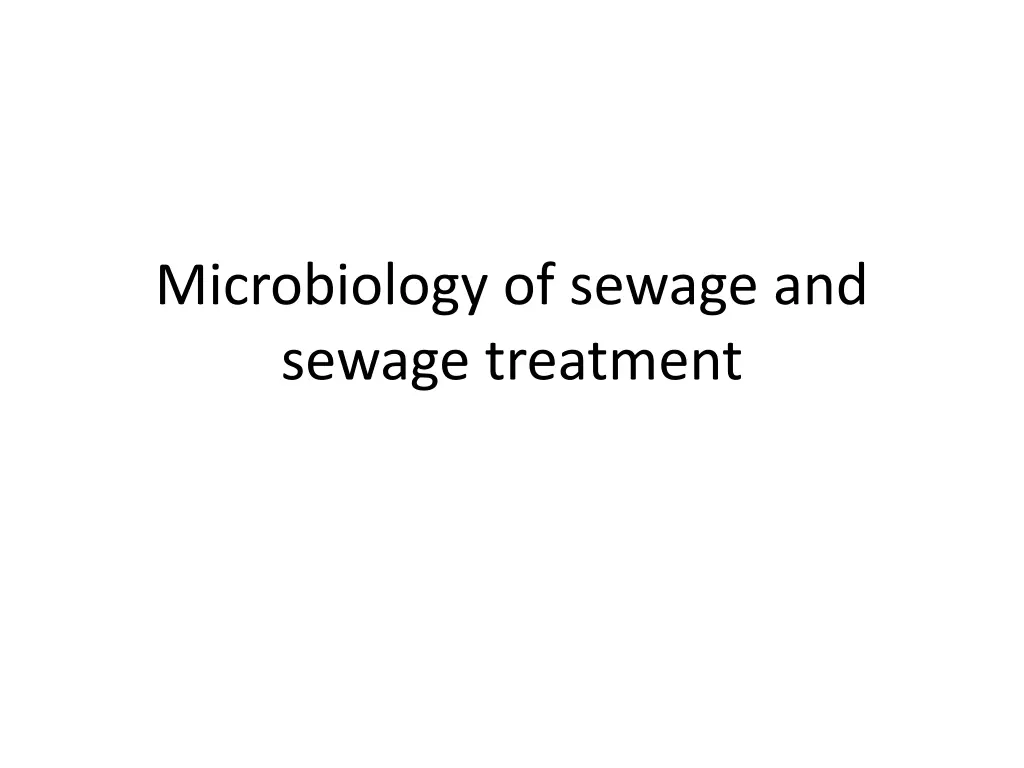
Understanding Microbiology of Sewage Treatment Process
Explore the fascinating world of microbiology in sewage treatment. Learn about the abundance of microorganisms in raw sewage, bacterial growth phases, and the importance of substrate availability. Discover the stages of bacterial reproduction and death in sewage treatment systems.
Download Presentation

Please find below an Image/Link to download the presentation.
The content on the website is provided AS IS for your information and personal use only. It may not be sold, licensed, or shared on other websites without obtaining consent from the author. If you encounter any issues during the download, it is possible that the publisher has removed the file from their server.
You are allowed to download the files provided on this website for personal or commercial use, subject to the condition that they are used lawfully. All files are the property of their respective owners.
The content on the website is provided AS IS for your information and personal use only. It may not be sold, licensed, or shared on other websites without obtaining consent from the author.
E N D
Presentation Transcript
Microbiology of sewage and sewage treatment
Domestic sewage contains enormous quantities of microorganism. Bacteria counts in raw sewage may be expected to range from 50 000 to 5 000 000 / ml . In the presence od adequate food and oxygen, bacteria will reproduce as illustrated in the figure below
Log phase: it represent the time required for the organism to acclimate to their new environment Log phase: this phase coincides with the max rate of substrate removal.
Declining growth: this phase represents decreasing of growth phase Stationary phase: here the population remains stationary because the growth of new cells is offset by the death of od cells.
Increasing death phase; in this phase the death rate of bacteria begins to increase Log death phase : in this phase the death rate of bacteria exceeds the production of new cells Death: in this phase the substrate is depleted and the bacteria die due to lack in substrate.






















